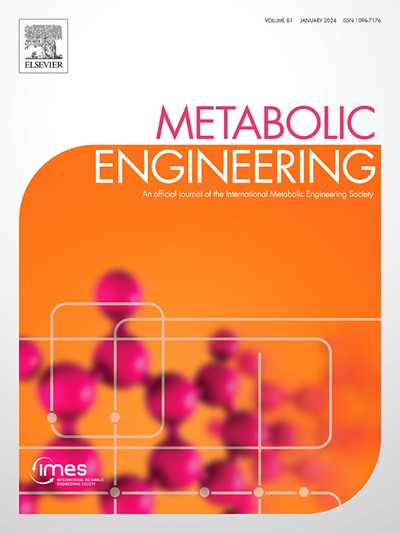Unlocking the potential of Shewanella in metabolic engineering: Current status, challenges, and opportunities
IF 6.8
1区 生物学
Q1 BIOTECHNOLOGY & APPLIED MICROBIOLOGY
引用次数: 0
Abstract
Shewanella species are facultative anaerobes with distinctive electrochemical properties, making them valuable for applications in energy conversion and environmental bioremediation. Due to their well-characterized electron transfer mechanisms and ease of genetic manipulation, Shewanella spp. have emerged as a promising chassis for metabolic engineering. In this review, we provide a comprehensive overview of the advancements in Shewanella-based metabolic engineering. We begin by discussing the physiological characteristics of Shewanella, with a particular focus on its extracellular electron transfer (EET) capability. Next, we outline the use of Shewanella as a metabolic engineering chassis, presenting a general framework for strain construction based on the Design–Build–Test–Learn (DBTL) cycle and summarizing key advancements in the engineering of Shewanella's metabolic modules. Finally, we offer a perspective on the future development of Shewanella chassis, highlighting the need for deeper mechanistic insights, rational strain design, and interdisciplinary collaboration to drive further progress.
求助全文
约1分钟内获得全文
求助全文
来源期刊

Metabolic engineering
工程技术-生物工程与应用微生物
CiteScore
15.60
自引率
6.00%
发文量
140
审稿时长
44 days
期刊介绍:
Metabolic Engineering (MBE) is a journal that focuses on publishing original research papers on the directed modulation of metabolic pathways for metabolite overproduction or the enhancement of cellular properties. It welcomes papers that describe the engineering of native pathways and the synthesis of heterologous pathways to convert microorganisms into microbial cell factories. The journal covers experimental, computational, and modeling approaches for understanding metabolic pathways and manipulating them through genetic, media, or environmental means. Effective exploration of metabolic pathways necessitates the use of molecular biology and biochemistry methods, as well as engineering techniques for modeling and data analysis. MBE serves as a platform for interdisciplinary research in fields such as biochemistry, molecular biology, applied microbiology, cellular physiology, cellular nutrition in health and disease, and biochemical engineering. The journal publishes various types of papers, including original research papers and review papers. It is indexed and abstracted in databases such as Scopus, Embase, EMBiology, Current Contents - Life Sciences and Clinical Medicine, Science Citation Index, PubMed/Medline, CAS and Biotechnology Citation Index.
 求助内容:
求助内容: 应助结果提醒方式:
应助结果提醒方式:


